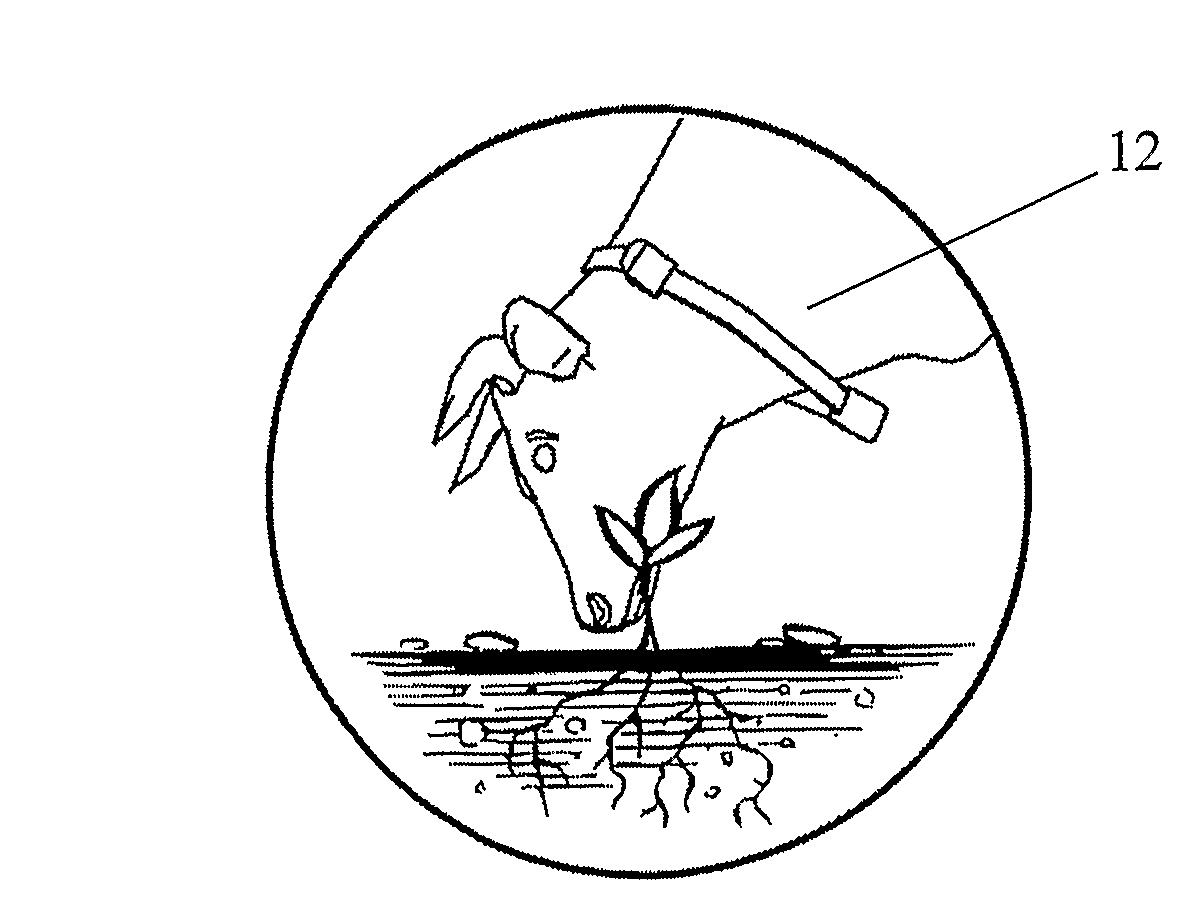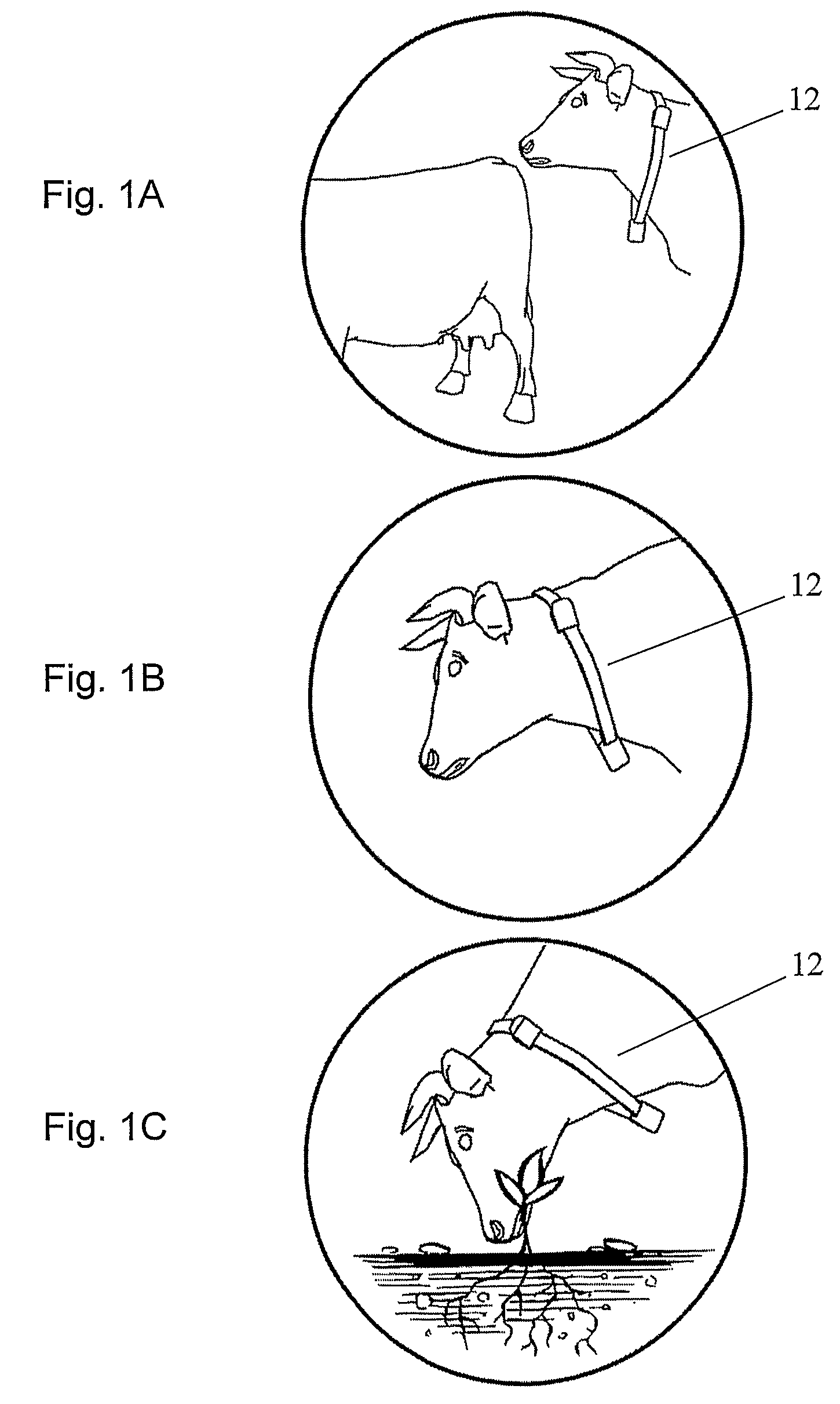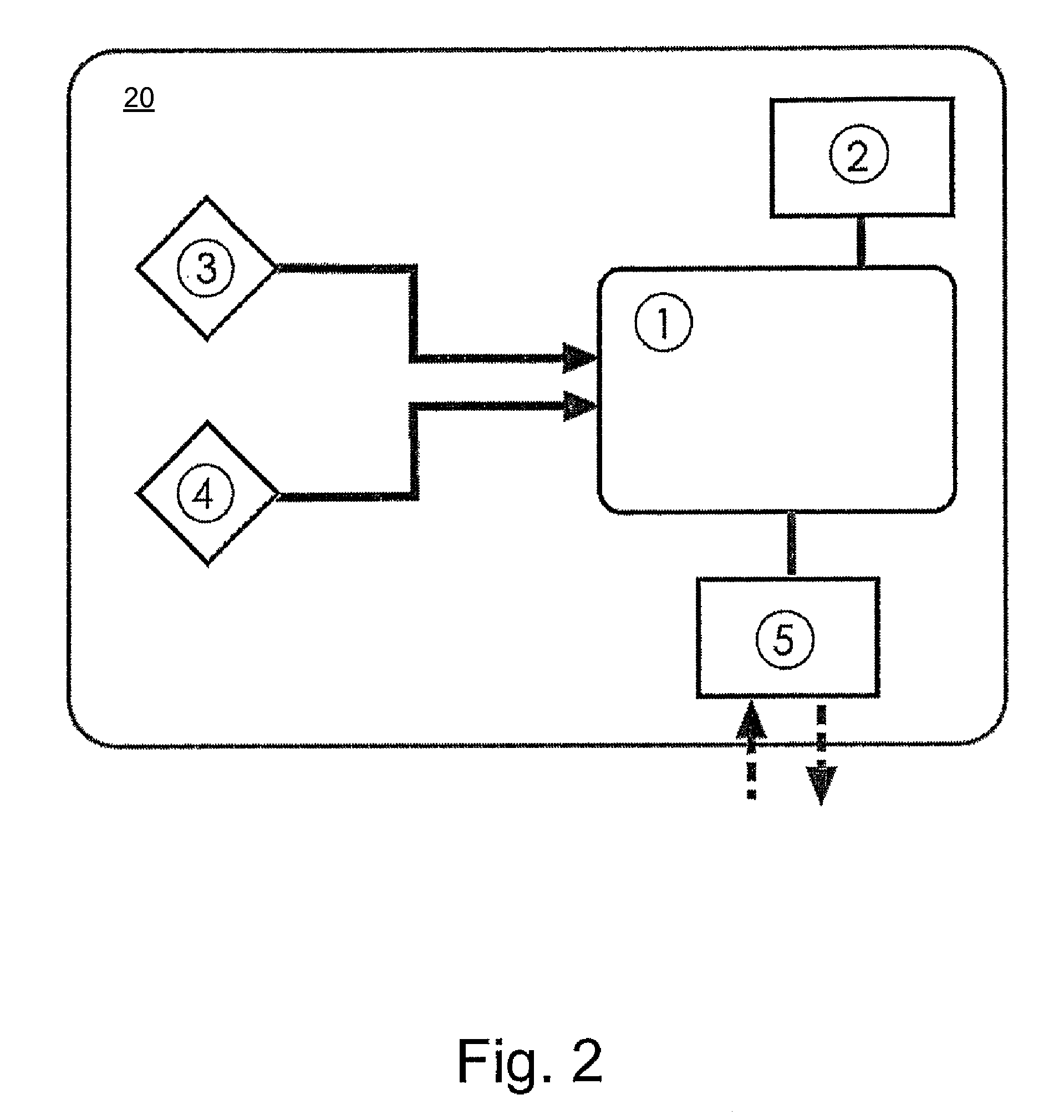Method and device for detecting estrus
a technology of estrus and detection method, which is applied in the field of methods and devices for detecting estrus, can solve the problems of low reliability of the device, not all cattle animals ride other cattle animals, and a lot of work involved in mounting, so as to reduce the impact of the animal's eating habits
- Summary
- Abstract
- Description
- Claims
- Application Information
AI Technical Summary
Benefits of technology
Problems solved by technology
Method used
Image
Examples
Embodiment Construction
[0038]The method and device of this invention have the advantage of using information indicative of the animal's eating periods directly (such as noises typical of digestion) or indirectly (such as angle of inclination of the animal's neck) in combination with information indicative of the animal's level of activity, such as sensing of the animal's motion. Combining of the two types of data may dramatically enhance the probability of a signal indicative of high activity to be rightly construed as indicative of estrus if indication of the animal eating is used to mark “eating periods”, which, as discussed earlier, are of very low probability to involve estrus behavior. This property prevents false interpretation of the information gathered, since a large portion of the animal's head movement occurs during eating.
[0039]The eating periods can be detected by measuring the animal's head inclination relative to the ground. Attention is made to FIGS. 1A-1C, which are schematic illustration...
PUM
 Login to View More
Login to View More Abstract
Description
Claims
Application Information
 Login to View More
Login to View More - R&D
- Intellectual Property
- Life Sciences
- Materials
- Tech Scout
- Unparalleled Data Quality
- Higher Quality Content
- 60% Fewer Hallucinations
Browse by: Latest US Patents, China's latest patents, Technical Efficacy Thesaurus, Application Domain, Technology Topic, Popular Technical Reports.
© 2025 PatSnap. All rights reserved.Legal|Privacy policy|Modern Slavery Act Transparency Statement|Sitemap|About US| Contact US: help@patsnap.com



